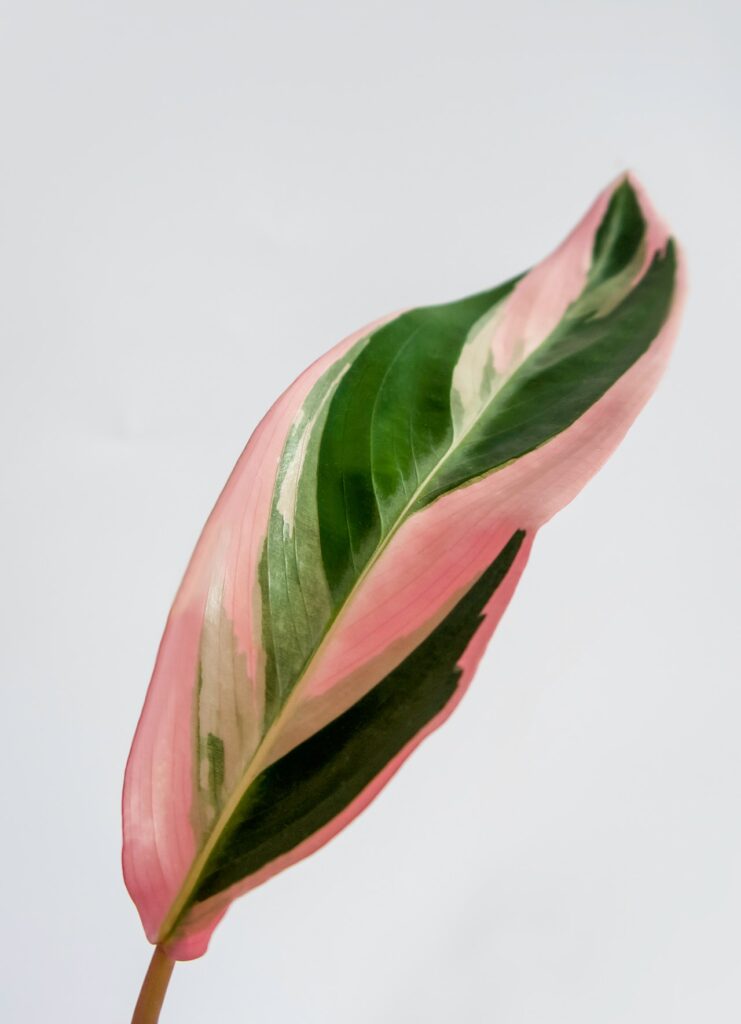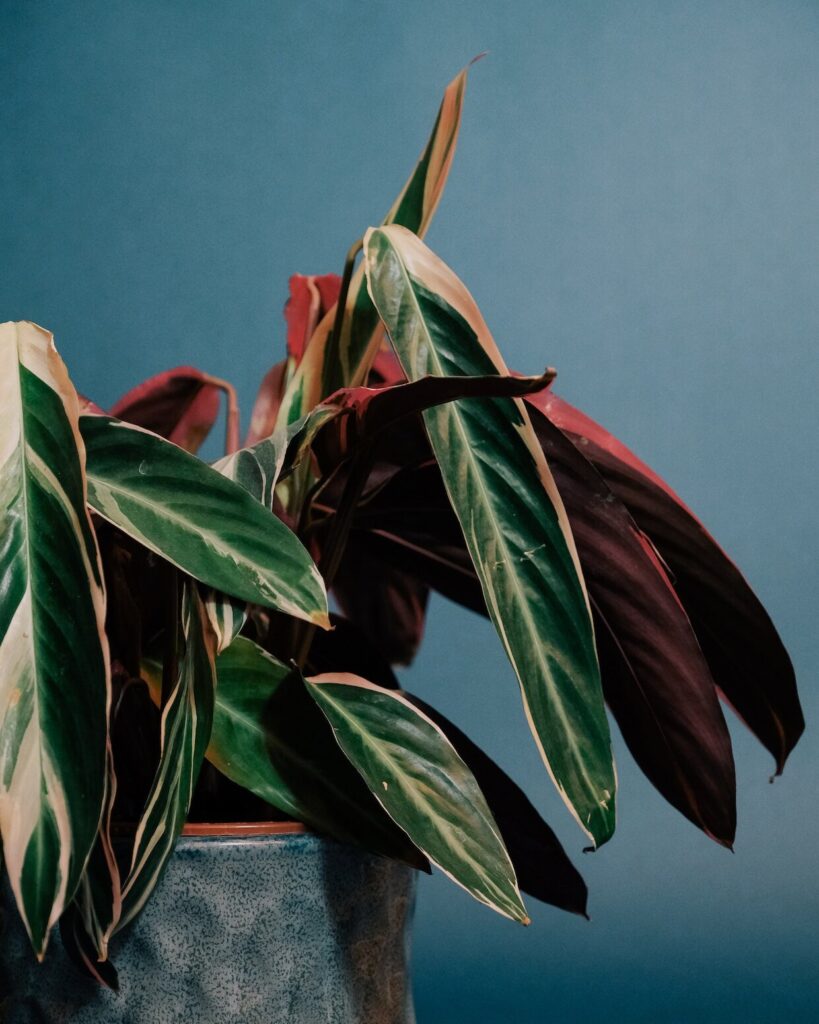One of the reasons people propagate Stromanthe Triostar is because its leaves have vivid pastel stripes that add dreamy tropical vibes. It is a good addition to your plant collection because it has striking variegated foliage that makes it interesting. In landscaping, it can be grown as a border, container plant, or houseplant. Keeping it vibrant and healthy is hard because it is sensitive to different environmental conditions.
About Stromanthe Triostar
Stromanthe Triostar is a houseplant that originates from Brazil. It is also known as Stromanthe Thalia, Calathea Triostar, Tricolor Stromanthe, Triostar Stomanthe, Tricolor prayer plant, and Magenta Triostar. It has foliage of green, pink, and cream that catches the attention. It is one of the prayer plants because its leaves fold together at night.

2 Methods to propagate Stromanthe Triostar
Stromanthe Triostar is best propagated through division. Reproducing it from stem cuttings is possible, but not advisable because it doesn’t result in effective propagation.
Method 1: Propagating from division
Choose a healthy mother plant
A healthy mother plant has vibrant foliage and strong roots. It increases the success of propagating Stromanthe Triostar.
Tip: Watering the surface of the plant before pulling it from the container will speed up the process and keep the whole plant intact.
Entangle the roots with your hands
The roots are important so they must be separated gently to keep them intact. Each plant must have healthy roots and three to four leaves to grow successfully.
Tip: To avoid transplant shock, use the same potting mix that you use on the mother plant. Providing the same environmental condition will make the plant grow faster.
Check the condition of the roots
Checking the roots’ condition before planting the divided Stromanthe Triostar will prevent any root damage from affecting the whole plant.
Plant the divided Stromanthe Triostar in well-draining soil
The plant must stay aerated and hydrated so that the minerals and nutrients will be distributed equally from roots to leaves. The growth of new leaves signals that their roots are already established. You can dust its leaves to bring out its brilliance. It needs to be grown in soil that drains properly so that it can respond effectively to various environmental conditions.
Method 2: Propagating from Stem Cuttings
Cut 8 to 10 inches of stem from the mother plant
The mother plant must be healthy to propagate them effectively. The more stems you cut, the higher the chance that you will successfully propagate a stromanthe triostar from cuttings.
Root stem cuttings in distilled water
The Stromanthe Triostar is sensitive to chemicals. You can use distilled water, rainwater, spring water, and tap water without chemicals. If you will root stem cuttings together in one container, you must monitor it regularly so you can immediately remove the cuttings that will get rot or damaged.
Plant the stem cuttings in well-draining soil
The condition of stem cuttings must be checked regularly to keep them healthy. It needs special care and attention because if you don’t take care of them.
Care Tips for Stromanthe Triostar
Stromanthe Triostar requires special care and attention to prolong its life. Here are the things that you must maintain for it to grow effectively.
Water
The water that it requires depends on the temperature. Check the condition of its soil regularly to know the amount of water that it needs. Let the soil dry an inch before you water it again. The water that you must use should be free of chlorine or other chemicals to keep its leaves healthy and vibrant.
Light
It needs to be grown in a sheltered spot to keep its foliage stunning. Its leaves will curl up when it receives too much heat. Curling its leaves is the plant’s defense mechanism to protect itself from too much heat. When it receives too much light, its leaves will turn downwards at night. When it receives little light, its leaves will stay open at night.
Temperature and Humidity
Stromanthe Triostar grows better in warm and humid environmental conditions. The ideal condition for the plant is 18 to 27 degrees Celsius. When you put it indoors, don’t put it in a room with an air-conditioning system because it is not an ideal environment for the plant.
Soil
Keep the soil moist but let it dry an inch before you water the plant again. When the leaves turn yellow, it means that the soil is waterlogged. If you notice that the is not drying out properly, you must change its pot and soil. The ideal potting mix for Stromanthe Triostar is an equal part of peat and perlite. It must be repotted every two to three years because the soil loses its nutrients as time goes by.
Fertilizer
The fertilizer must be used sparingly to prevent a high level of soil acidity. The tips and edges of its leaves will turn brown when you feed it with too much fertilizer.
When to start to propagate a Stromanthe Triostar plant?
Propagating Stromanthe Triostar at the right time will result in effective propagation. The season and the condition of the mother plant must be considered before you start propagating them.

Season
The best season to propagate Stromanthe Triostar is during spring and summer. These are the seasons when new growths are developed so it will be easier to cut its stems or divide the plant.
Condition of the plant
If the plant outgrows its current pot, it must be transferred to a larger pot. Divide the plant to propagate them and increase your plant collection. It must be repotted every three to five years to retain the moisture of the plant.
The mother plant must also be healthy to propagate it successfully. A healthy mother plant will help the plant to easily adapt to its new environment.
Conclusion
The division is the best method to propagate Stromanthe Triostar. This plant is difficult to grow since it is sensitive to several environmental factors. Checking its condition regularly will keep it healthy and prolong its life. The plants that you can combine with it are Aucuba, Bougainvillea, Bush Lily, and Gardenia.

Elizabeth Mcmillan is a passionate gardener with a strong interest in plants. She used to be a teacher, but Elizabeth has spent the last few years immersing herself in the world of plants, learning about their biology and cultural value and trying out different ways of growing them in her own garden. Elizabeth Mcmillan loves indoor plants, succulents, and cacti, and her friends and family know her as a plant care expert.








